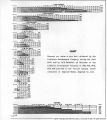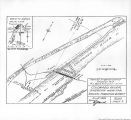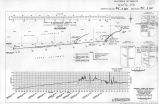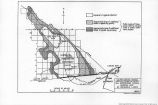| OCR Text |
Show THE ALL-AMERICAX CAXAL. 77 that the maximum to be delivered in any one month does not exceed 13.5 per cent of the whole, then 0.45 acre-foot per acre per month delivered to the land will be sufficient. The losses in the canals are not anticipated to be excessive after they are thoroughly seasoned. The present practice of the Imperial Irrigation District is to deliver the water to the mutual companies with an allowance of 10 per cent for losses in the distributing canals. The losses for 1915 as based upon the whole year seem to be in excess of this amount, but taking the losses during the three maximum months of June, July, and August the losses in the distributing system seem to be less than 10 per cent of the amount of water diverted at Hanlon's heading. During these same months the losses from Hanlon's heading to the point of delivery into the mutual canals average nearty 21 per cent, but during the month of maximum discharge there is considerable overflowing of the canal banks and ponding, which increases the losses considerably. (b) During the season of 1913 the Reclamation Service made some measurements for the loss of water due to seepage upon some of the main canals and laterals. These results gave a loss of 0.64 foot in depth per 24 hours for the larger canals to 2 feet for the smaller laterals, with a mean of 1.17 feet for all the observations. (c) Assuming a loss of 1.2 feet in depth over the wetted perimeter per 24 hours would give the following losses for a canal from Laguna Dam to the Alamo River: Laguna Dam to siphon drop (of amount diverted), 170 second-feet, or 1.6 per cent; siphon drop to Pilot Knob (of amount at siphon drop), 112 second-feet, or 1.25 per cent; Pilot Knob to east-side mesa canal (of amount at siphon drop), 286 second-feet, or 3.2 per cent: east-side mesa canal to the Alamo River (of amount at siphon drop), 206 second feet, or 2.3 per cent; a total loss of 774 second-feet from the Laguna Dam to the Alamo River, or 7.3 per cent of the amount diverted at Laguna Dam. It is the intention to have the canal of sufficient capacity, with a 6-foot freeboard, to care for all the storm waters entering the canal from Laguna Dam to Araz where the excess water may be wasted, There are certain seasons of the year when the canal would be free of any danger of flood waters, and at a season when there is excess water passing over Laguna Dam it may be desirable to crowd more water into the canal. Occasions will also arise when one portion of a system will require more water than another. For these reasons it was deemed as well for this estimate to figure the canal capacities as though there were no losses in the canal due to seepage and evaporation. (d) In a report made by Elwood Mead, D. C. Henny, and Joseph Jacobs on Irrigation and Flood Protection Problems of the Imperial Valley, California, dated March 5, 1917, they concluded that all the |
| Source |
Original book: [State of Arizona, complainant v. State of California, Palo Verde Irrigation District, Coachella Valley County Water District, Metropolitan Water District of Southern California, City of Los Angeles, California, City of San Diego, California, and County of San Diego, California, defendants, United States of America, State of Nevada, State of New Mexico, State of Utah, interveners] : California exhibits. |




































































































































































































































































































































































































